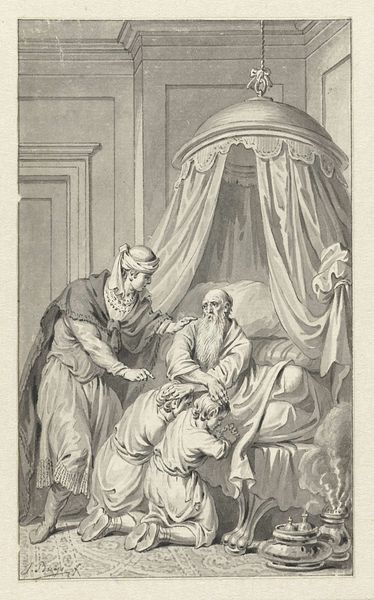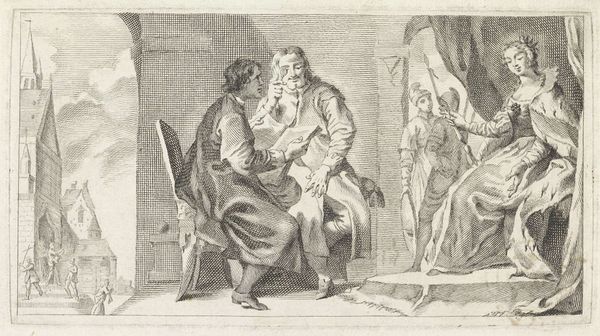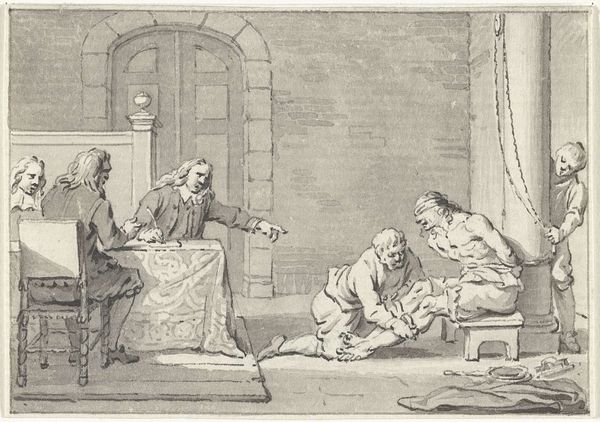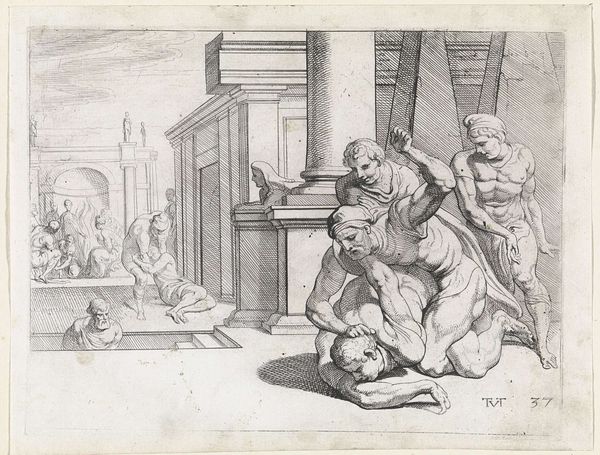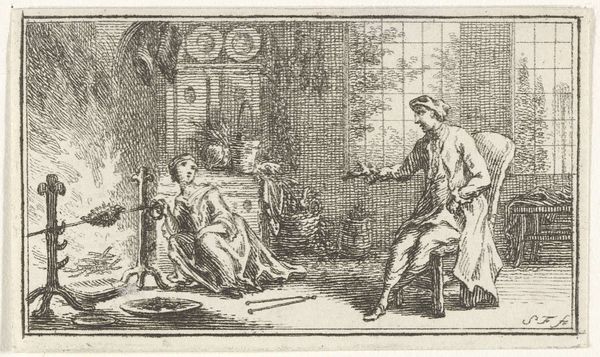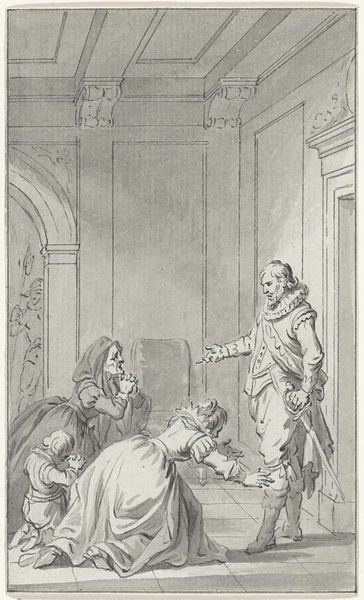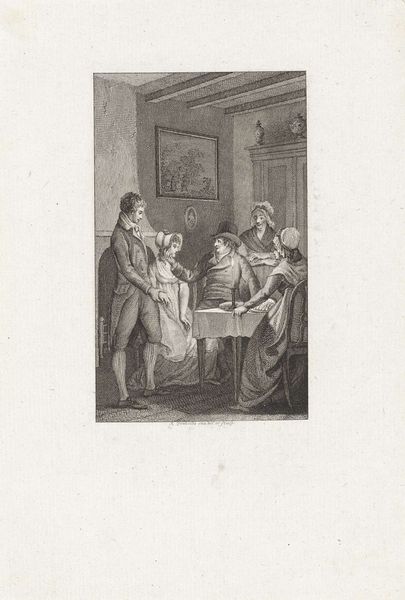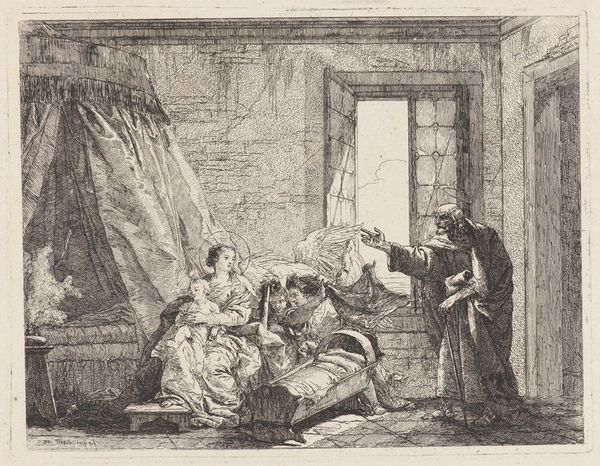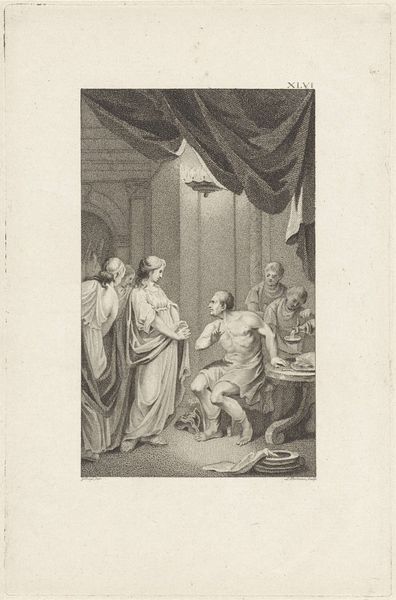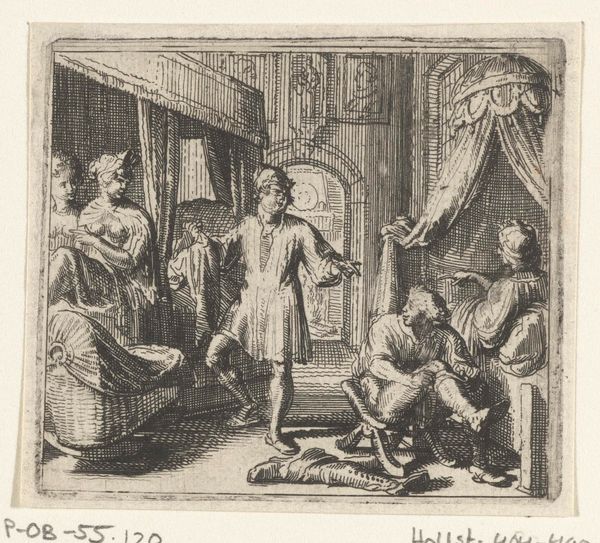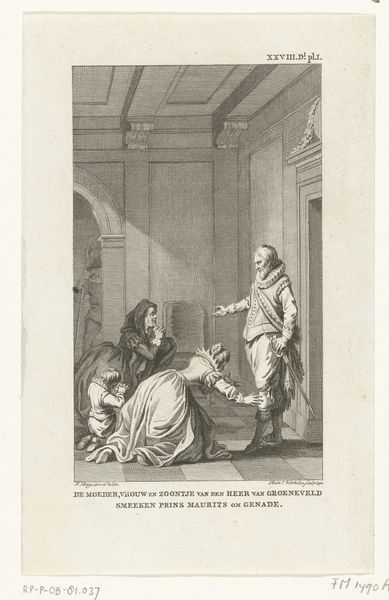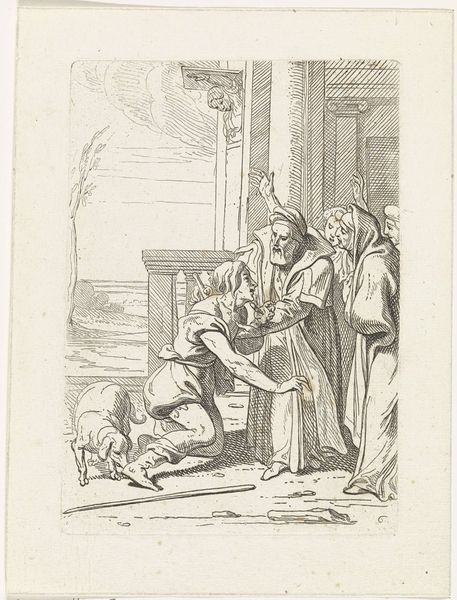
Dimensions: height 62 mm, width 87 mm
Copyright: Rijks Museum: Open Domain
Curator: Harmanus Vinkeles created this print, "Verhoor en marteling van Cornelis de Witt, 1672," around 1787-1788. The work is currently held here at the Rijksmuseum. Editor: It's immediately disturbing, the scene's inherent tension despite the static lines. There's a clear separation of power and intense suffering etched into the image. Curator: Indeed. It depicts the interrogation and torture of Cornelis de Witt, a Dutch politician, in 1672. Vinkeles produced this well after the fact, during a period of intense political reflection and nation-building. Editor: The use of light and shadow is stark, even for an engraving. Look at the figures on the left, detached and almost clinical as they watch the torture. The blindfolded figure of de Witt contrasts sharply. He becomes a symbol of violated justice, wouldn't you say? The shadows across his eyes really drive that point home. Curator: I think it speaks more broadly to the role of the law in statecraft. Torture, especially in the 17th century, was deployed as a legal procedure, however barbaric by modern standards. Vinkeles shows how easily political expedience corrupts even institutional processes. Editor: And those instruments of torture laid bare on the floor! Their prominence isn't just for shock value. They speak to a legacy, the ingrained cruelty that’s been sanctioned over generations. It suggests that even those administrators sitting passively have dirt on their hands, however indirectly. Curator: Quite. Vinkeles certainly compels the viewer to reckon with uncomfortable truths about authority, then and now. He critiques the venerated Dutch Golden Age, asking his audience to examine the human cost lurking beneath the surface. Editor: The longer I look, the more the composition reveals layers of complicity, of silence... almost like a stage play with terrible actors caught in history's spotlight. Curator: This print then isn't just historical documentation; it's a call to vigilance, challenging the very foundations on which power rests. Editor: Precisely. Thank you for elucidating the importance of this captivating, if unpleasant, print. It offers ample food for thought.
Comments
No comments
Be the first to comment and join the conversation on the ultimate creative platform.
